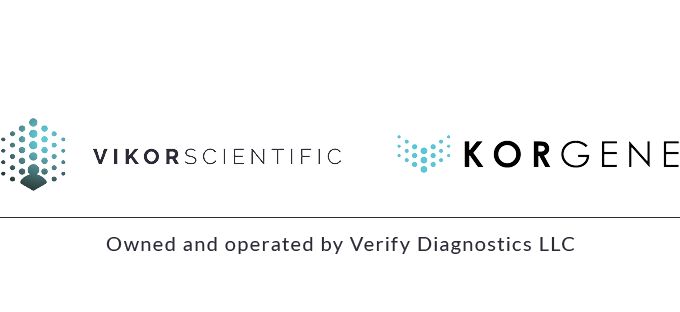In an effort to serve medical professionals in a complete and efficient manner, we have provided responses to some common inquiries below. If you have any further questions, please feel free to contact us anytime.
How does VIKOR SCIENTIFIC™ molecular pathogen testing compare to traditional culture (sensitivity and susceptibility) for detecting pathogens and determining a treatment protocol?
VIKOR SCIENTIFIC™ introduces ABX Assist™, an intelligent, molecular diagnostic solution. This is a unique, data-driven approach that combines precise, molecular pathogen and resistance gene detection with regional sensitivity and susceptibility data. ABX Assist™ supports clinicians in providing the most targeted and customized treatment plan for their patients.
VIKOR offers the most extensive Resistance Gene Testing Panel on the market today, identifying up to 49 resistance genes that could lead to ineffective antibiotic therapy, including the genes for the enzymes associated with ESBL, which can have even worse outcomes than MRSA.
Traditional culture technique involves using special mediums in a microbiology lab to try to grow potential pathogens. VIKOR SCIENTIFIC™ is a molecular lab and we do not grow pathogens. Instead, we utilize short segments of DNA and RNA sequences (primers) to specifically and accurately identify the same sequences within the patient’s sample. We have developed customized pathogen panels per type of body system being evaluated. We test the majority of the pathogens in the U.S. associated with infections of each of the systems being targeted.
Why do we need an alternative to culture?
Although culture has been the “gold standard” for many years and helped us identify and treat billions of patients, it is becoming more difficult for today’s pathogens to grow in these culture mediums. This technique was originally developed to grow “planktonic” cells in an artificial medium developed outside of the body (in vitro) to resemble the preferred environment of the pathogen inside of the body (in vivo). These planktonic cells have the cell wall that can adhere to these mediums. However, the cells being identified in the majority of infections today are felt to originate from “Biofilms” and vary phenotypically from the planktonic cells by as much as 70%. They do not contain the cell walls of planktonic cells and therefore do not readily attach to the culture mediums and can’t be grown.
Biofilms are communities of microorganisms that are encased in a slimy matrix of polysaccharides, proteins and DNA. The protective covering of the biofilm can adhere to surfaces but the individual cells within the matrix cannot survive in their current state outside of the biofilm. If they are dispersed from the biofilm, they begin a transformation of up-regulating specific genes for survival outside of their environment.
Even though these microorganisms within the biofilm are felt to be the same genotypically, they have the ability to turn ON (up-regulate) and OFF (down-regulate) particular genes based off their need to utilize them. These microorganisms can communicate through cell signaling and carry out different functions than the freestanding planktonic cells outside of the biofilm. They are stronger together and can also fight differently against our human host defenses and antibiotic therapies. In fact, our current antibiotic therapies were developed to kill planktonic cells so the mechanism of action of the antibiotic(s) may not be suitable to kill these biofilm cells, despite the presence or absence of resistance genes.
How do I know when to order molecular pathogen testing?
A. Respira-ID™
Rapid antigen tests like the Flu have created a false sense of security among patients and providers. When it results “negative” and is wrong, this leads to delayed treatment and poor clinical outcomes. It may lack sensitivity and only focuses on a single pathogen diagnosis. There is a high rate of co-infection in respiratory illness and it is necessary to test all pathogens that could be key culprits for respiratory infections, along with the potential antibiotic resistance.
B. Urine-ID™
Biofilm development in these specimens has made it difficult to identify the culprit pathogen(s). Recurrent or persistent UTIs are most likely infections originating from the biofilm. PCR identification is not limited by the presence of biofilm. Development of MDROs in these specimens has made antibiotic resistance testing a necessity.
C. Urine-ID™ STI
75% of STIs are asymptomatic. This is why screening has been encouraged. Viruses are treatable but not curable. They can remain in the body for many years and titers can rise and fall based off of good or bad stress on the body. For example, an upper respiratory infection could exacerbate the virus as well as sexual intercourse. The stress does not have to be bad stress on the immune system. It is important to realize the identification of a virus does not mean it was recent. Bacterial infections are treatable and curable.
D. Gastro-ID™
The rate of deaths related to GI infections has doubled over the recent years. It is very difficult growing these pathogens in culture mediums.
E. Wound-ID™
These are very complicated infections and multi-factorial (infection, inflammation, circulation components). A low percentage of wound pathogens routinely grow in cultures. It is important to rule out infection before considering advanced therapies.
F. Nail-ID™
It may take up to 3 weeks to receive results for a nail culture. The Nail-ID™ panel results within 24 hours of lab arrival. We see a high % of mixed infections (fungal/bacterial) and this panel tests for both. We cannot assume all nail infections are fungal and receiving an accurate and expedited result can help to avoid prescribing toxic medications when they are not needed.
G. Sinus-ID™
Persistent or recurrent sinus infections may be difficult to culture because patients are usually already taking antibiotics. Antibiotics do not affect PCR sensitivity. Needle aspirations may be the next step in obtaining a specimen and it is helpful to get the diagnosis correct after putting the patient through extensive measures of obtaining the specimen.
H. Ortho-ID™
Surgical site infections can be disastrous and it is important to identify patients at risk of these infections in the beginning as well as having the ability to quickly detect culprit pathogens and antibiotic resistance. Turn around time is vital in decreasing morbidity and mortality.
Should a patient be concerned that VIKOR SCIENTIFIC™ is performing “DNA” testing?
It is important for the patient to understand that we are not testing their DNA makeup. We are testing for the pathogens. PCR testing is very targeted. We are looking for the specific RNA/DNA sequences of the pathogens listed on the test requisition form. The pathogens tested are comprised of the ones that are known to cause the majority of the infections in the U.S.
How much does the testing cost for the patient?
Fortunately, both Federal and Commercial providers see the value of molecular pathogen testing. Medicare, Medicaid, Tricare and most commercial plans cover our testing. If a patient has commercial insurance and has not met their deductible, we are obligated by our agreements with insurance providers to follow the terms of their agreements and invoice patients. We are not partnered with a collections agency and will work closely with patients to construct a payment plan that fits within their budget. We also have a Patient Financial Hardship Program for patients who cannot afford medical care.
How are results delivered?
VIKOR SCIENTIFIC™ results can be accessed electronically through a HIPAA compliant web portal or by fax. We prefer to send via both modalities. We are also able to integrate with most EHR systems. We value time and try to make retrieving results convenient so providers can focus on treatment.






